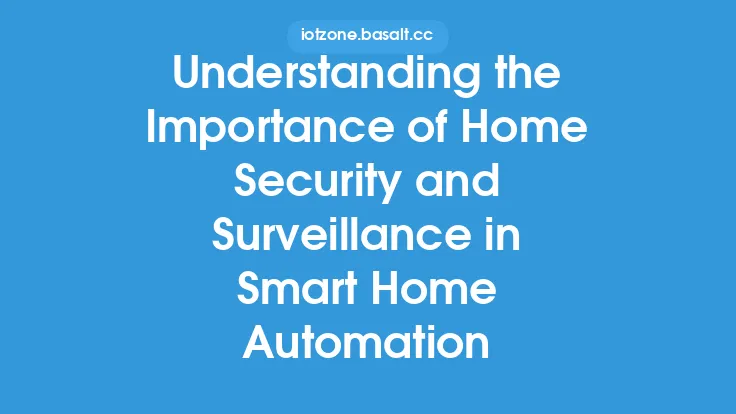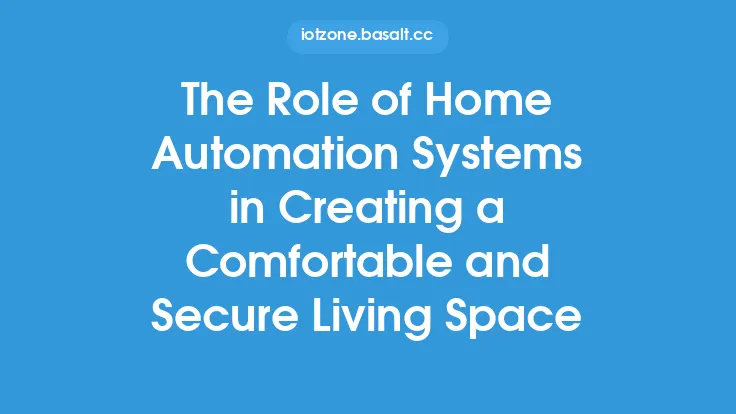The concept of smart home automation has been around for several years, and it has revolutionized the way we live and interact with our homes. One of the key components of smart home automation is the voice hub, which acts as the central nervous system of the smart home, enabling users to control and interact with various devices using voice commands. In this article, we will delve into the world of voice hubs, exploring their role in smart home automation, their architecture, and the technologies that power them.
Introduction to Voice Hubs
A voice hub is a device that integrates multiple smart devices and systems, allowing users to control and monitor them using voice commands. Voice hubs are equipped with advanced natural language processing (NLP) capabilities, which enable them to understand and interpret voice commands, and then execute the corresponding actions. They can be used to control a wide range of devices, including lights, thermostats, security cameras, door locks, and entertainment systems.
Architecture of Voice Hubs
The architecture of a voice hub typically consists of several components, including a microphone array, a processor, memory, and a communication module. The microphone array is responsible for capturing the user's voice commands, while the processor and memory work together to process and interpret the commands. The communication module enables the voice hub to connect to other devices and systems, using protocols such as Wi-Fi, Bluetooth, or Zigbee.
Technologies Powering Voice Hubs
Voice hubs rely on several technologies to function, including speech recognition, NLP, and machine learning. Speech recognition technology enables the voice hub to transcribe spoken words into text, which is then processed by the NLP engine to determine the user's intent. Machine learning algorithms are used to improve the accuracy of the speech recognition and NLP engines over time, allowing the voice hub to learn and adapt to the user's behavior and preferences.
Types of Voice Hubs
There are several types of voice hubs available, each with its own strengths and weaknesses. Some of the most popular voice hubs include Amazon Echo, Google Home, and Apple HomePod. These devices are designed to be standalone voice hubs, and they come with their own built-in speakers and microphones. Other types of voice hubs include smart speakers with displays, such as the Amazon Echo Show and the Google Nest Hub, which provide a visual interface for interacting with the voice hub.
Integration with Smart Devices
One of the key benefits of voice hubs is their ability to integrate with a wide range of smart devices and systems. This integration is made possible through the use of APIs and software development kits (SDKs), which enable developers to create custom skills and integrations for the voice hub. Some of the most popular smart devices that can be integrated with voice hubs include lights, thermostats, security cameras, and door locks.
Security and Privacy Considerations
As with any connected device, voice hubs pose security and privacy risks if not properly secured. Some of the key security and privacy considerations for voice hubs include data encryption, secure authentication, and regular software updates. Users should also be aware of the potential risks associated with voice hubs, such as eavesdropping and data breaches, and take steps to mitigate these risks, such as using strong passwords and keeping their devices up to date.
Benefits of Voice Hubs
The benefits of voice hubs are numerous, and they include convenience, ease of use, and increased accessibility. Voice hubs enable users to control their smart devices and systems using voice commands, which can be especially useful for people with disabilities or mobility issues. They also provide a centralized interface for interacting with multiple devices and systems, making it easier to manage and control the smart home.
Challenges and Limitations
Despite the many benefits of voice hubs, there are also several challenges and limitations to consider. Some of the key challenges and limitations include compatibility issues, latency, and limited functionality. Compatibility issues can arise when trying to integrate multiple devices and systems with the voice hub, while latency can occur when there are delays in processing voice commands. Limited functionality can also be a issue, as some voice hubs may not support all of the features and functions of the devices and systems they are integrated with.
Future of Voice Hubs
The future of voice hubs is exciting, with advancements in technologies such as NLP, machine learning, and computer vision. These advancements will enable voice hubs to become even more sophisticated and powerful, with the ability to understand and interpret more complex voice commands, and to integrate with an even wider range of devices and systems. We can also expect to see the development of new types of voice hubs, such as those that are integrated into cars, appliances, and other devices.
Best Practices for Using Voice Hubs
To get the most out of a voice hub, there are several best practices to follow. These include setting up the voice hub in a central location, using clear and concise voice commands, and regularly updating the software and firmware. Users should also be aware of the potential security and privacy risks associated with voice hubs, and take steps to mitigate these risks, such as using strong passwords and keeping their devices up to date.
Conclusion
In conclusion, voice hubs play a critical role in smart home automation, enabling users to control and interact with multiple devices and systems using voice commands. They rely on advanced technologies such as speech recognition, NLP, and machine learning, and they come in a variety of forms, including standalone devices and smart speakers with displays. While there are several benefits to using voice hubs, there are also challenges and limitations to consider, such as compatibility issues, latency, and limited functionality. By following best practices and staying up to date with the latest developments in voice hub technology, users can get the most out of their voice hubs and enjoy a more convenient, accessible, and automated smart home experience.





